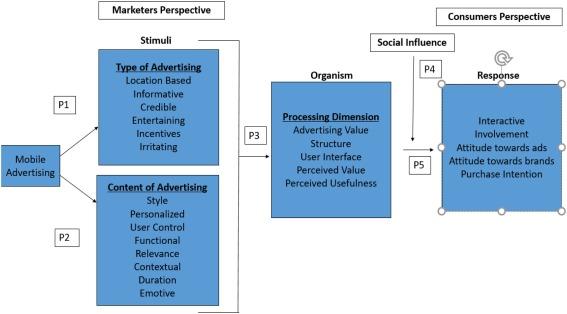Unlocking Success as a Learning Architect: Role, Skills, and Career Path Explained
Introduction: what is a learning Architect?
The education landscape is evolving rapidly, with technology-infused learning environments becoming the new benchmark at universities, colleges, and schools alike. Among the pivotal roles driving this conversion is the Learning Architect. This vital position bridges the gap between pedagogy and technology, ensuring impactful, engaging, and efficient learning experiences. If you’re exploring career opportunities in education technology (edtech), understanding what it takes to thrive as a Learning Architect could be your gateway to a fulfilling professional journey.
The Role of a Learning Architect in Education Technology
A Learning Architect is a professional who designs, implements, and optimizes digital learning environments and experiences within educational institutions. They collaborate with educators, instructional designers, administrators, and IT specialists to align learning solutions with academic objectives and technological trends.
Key Responsibilities
- Curriculum Design: Developing cohesive learning pathways that harness the potential of edtech tools and platforms.
- Technology Integration: Selecting and implementing digital solutions like Learning Management Systems (LMS), adaptive learning, and gamification.
- Stakeholder Collaboration: Working closely with faculty, students, and technical teams to ensure smooth adoption and effectiveness.
- Evaluation and Assessment: Analyzing the impact of digital learning solutions and refining strategies for continuous betterment.
- Change Management: Leading educational institutions through technology-driven change with empathy and strategic insight.
The Learning Architect ensures a seamless interplay between technological innovation and educational excellence,directly enhancing teaching outcomes and learner engagement.
Essential Skills for a Successful Learning Architect
to excel in a Learning Architect role within universities, colleges, or schools, a versatile skill set is crucial. Here are the top competencies sought after in education technology:
Technical Skills
- Understanding of Edtech Tools: Proficiency with platforms like Moodle, Canvas, Blackboard, or Google Classroom.
- Instructional Design: Familiarity with models such as ADDIE, SAM, or Universal Design for Learning (UDL).
- Data Analytics: Ability to interpret learning analytics for enhanced decision-making.
- User Experience (UX) Design: Ensuring interfaces and content are intuitive and accessible.
Pedagogical Expertise
- Curriculum Mapping: Aligning digital resources with educational outcomes and accreditation requirements.
- Assessment Strategies: Designing formative and summative assessments within digital arenas.
- understanding of Instructional Psychology: Applying learning science principles to boost retention and engagement.
Soft Skills
- Project Management: Leading multi-disciplinary teams and overseeing the rollout of edtech initiatives.
- Interaction: Translating complex ideas into clear, actionable plans for diverse audiences.
- Innovation Mindset: Staying curious and adaptable in the face of emerging technologies and pedagogies.
- Collaboration: Building productive partnerships within and beyond the institution.
How to Become a Learning Architect: education and Career Path
Embarking on a career as a Learning Architect typically involves a blend of formal education,professional experience,and continuous learning in both technology and pedagogy.
educational Background
- bachelor’s Degree: Commonly in Education,Instructional Design,Computer science,or a related field.
- Master’s Degree (Recommended): Degrees in Educational Technology, Learning Experience Design, or Curriculum Development can offer a competitive edge.
- Certifications: Credentials in project management (PMP), instructional design, or specific edtech platforms enhance credibility and expertise.
Professional Experience
- Experience as an Instructional Designer, eLearning Developer, Curriculum Specialist, or Educational Technologist can serve as a strong foundation.
- Hands-on involvement in educational technology initiatives, such as leading an LMS implementation or digital course redevelopment, is highly valuable.
Career Advancement
- Senior Learning Architect roles, Edtech Director, or Chief Learning Officer positions await those with strategic vision and broad impact.
- Opportunities to specialize in areas such as digital assessment, accessibility, or innovation strategy may arise with experience.
Benefits of Working as a Learning Architect
Choosing a Learning Architect position within the education technology sector comes with a range of rewarding benefits:
- impactful Work: Shape the future of education for hundreds or even thousands of learners.
- Continuous Learning: Stay at the forefront of technology and pedagogy.
- Career Adaptability: Opportunities across K-12 schools, colleges, universities, and corporate training environments.
- Growth Potential: Potential to move into leadership roles or consulting capacities as demand for digital learning expertise grows.
- Collaboration: Work alongside passionate educators, innovative technologists, and strategic leaders.
Practical Tips for Aspiring Learning Architects
If you’re eager to unlock success as a Learning Architect in universities, colleges, or schools, consider these actionable tips:
- Stay Informed: Regularly follow trends in education technology, such as AI in learning, personalized pathways, and emerging LMS features.
- Build a Portfolio: Showcase your experience with sample learning designs, case studies, or innovative edtech solutions.
- Develop Networks: Engage with professional communities, attend edtech conferences, and connect with mentors in the field.
- Practice empathy: Always consider the needs and challenges of educators and learners in your designs.
- Seek Feedback: Be open to constructive feedback and use it to refine your approach.
- Learn About Accessibility: Ensure your learning environments are inclusive for all users, embracing both universal design and compliance standards.
- Invest in Lifelong Learning: Take online courses,pursue certifications,or volunteer for projects to keep your skills sharp.
Conclusion: Your Pathway to a Rewarding Education Technology Career
The role of a Learning Architect is central to transforming educational experiences in today’s digital-first era. By blending strategic vision, pedagogical insight, and technological prowess, Learning Architects empower educational institutions to thrive amid rapid change. Whether you aspire to work in a university, college, or school, investing in the requisite skills and experience can unlock a dynamic and impactful career in education technology.
If you’re passionate about innovation, education, and meaningful impact, now is the perfect time to explore the path of a Learning Architect.Shape the future of learning, drive digital transformation, and help unlock success for educators and students alike.

